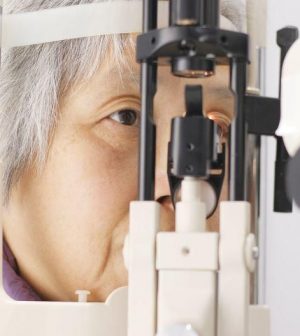- Understanding the Connection Between Anxiety and Depression
- How Daily Prunes Can Influence Cholesterol and Inflammation
- When to Take B12 for Better Absorption and Energy
- Epsom Salts: Health Benefits and Uses
- See What Saffron Can Do for Sleep and Heart Health
- 6 Common Mistakes to Avoid Before Your Physical
- Can Sweating Really Help You Beat a Cold?
- Strengthening Your Relationship: Practical Strategies
- Skip Storing This Everyday Product in the Fridge Door
- Green Tea + B3 Pairing May Boost Brain Health
When Diabetes Strikes, Eye Exams Can Save Your Sight

Could an annual eye exam save your sight if you have diabetes? Most definitely, one vision expert says.
“Diabetes is known to alter the health of the blood vessels in the retina and these vascular changes do not cause symptoms in the early stages,” explained Dr. Jeffrey Sundstrom, an ophthalmologist and retina specialist at Penn State Health Eye Center in Hershey, Pa.
“It’s extremely important to detect any changes early so we can take steps to prevent vision loss — and the way to do that is with an annual dilated eye exam,” he said in a Penn State news release.
With diabetes, the blood vessels in the retina often become leaky, and this can trigger a swelling of the macula — the part of the retina at the back of the eye that is responsible for central vision.
“Severe vision loss from diabetes can occur when abnormal blood vessels grow in the retina and into the vitreous — the gel portion of the eye,” Sundstrom said. “These abnormal blood vessels can lead to bleeding in the back of the eye and even cause a type of retinal detachment. If any of these conditions are left untreated, they can lead to progressive visual loss and blindness.”
More than half of people with diabetes will develop diabetic retinopathy, one of the leading causes of blindness in the United States, yet fewer than half of diabetes patients get annual vision checks.
Pregnant women with gestational diabetes are also at risk for diabetic retinopathy and should be seen multiple times throughout their pregnancy, according to Sundstrom.
There are several treatments if eye problems are discovered, including laser treatments and drugs.
As well as getting an annual dilated eye exam, diabetes patients should follow the ABCs to their manage diabetes and lower their risk for vision loss and other potential complications such as heart attack and stroke, Sundstrom said.
- A stands for the hemoglobin A1C test, which tracks whether blood sugar levels are under control. For those with diabetes, the target is below 6.5%.
- B stands for blood pressure.
- C stands for cholesterol, which should be below 200 mg/dL.
“Patients should work with their primary care doctor to optimize all three of the ABCs, and see their eye care provider for annual diabetic retinopathy screening exams,” Sundstrom recommended. “The key to maintaining good vision is a good relationship with both your primary care provider and your eye doctor.”
By managing their ABCs and getting an annual eye exam, most patients with diabetes can retain good vision, he said.
More information
There’s more on diabetes-related eye complications at the American Diabetes Association.
SOURCE: Penn State Health, news release, March 23, 2022
Source: HealthDay
Copyright © 2026 HealthDay. All rights reserved.










